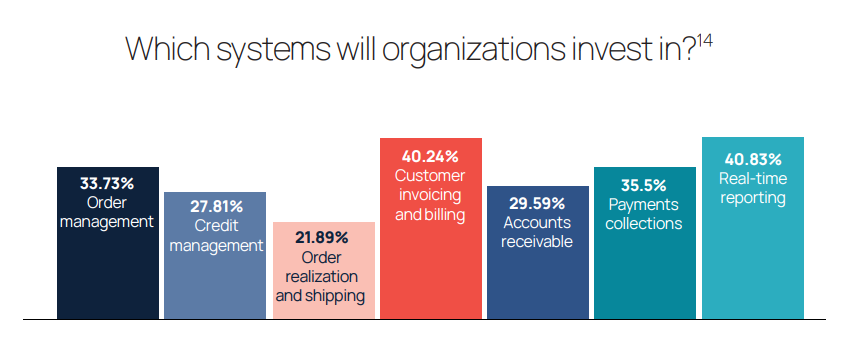Topics: Finance & Accounting, Order-to-cash cycle
Posted on September 10, 2025
Written By QX Global Group

The order to cash process is supposed to keep business flowing: an order is placed, goods are delivered, invoices go out, and payments come in. Simple in theory. In practice, it rarely plays out that smoothly.
Behind every invoice is a salesperson promising timelines, a manager juggling delivery, a finance team chasing accuracy, and a customer balancing their own cash flow. One missed detail or misaligned promise can turn an ordinary transaction into a dispute, and stretch payments by weeks.
This blog looks at the human side of the O2C process. We’ll unpack how everyday communication gaps and well-intended promises create real financial strain, and what leaders can do to bring discipline back into this cycle.
The order to cash process flow is more than just a finance cycle. It’s a business-wide journey that links sales, operations, and accounting to the customer experience. The main stages usually include:
At each stage, different teams play critical roles. Sales teams set terms, operations deliver on commitments, and finance ensures billing and collections run smoothly. If even one step falters, the entire order to cash business process slows down.
Most businesses think of the O2C process as a technology-driven cycle. But in practice, people are the ones shaping outcomes at every stage. Systems only work as well as the conversations, approvals, and decisions behind them.
One of the most common hurdles is the divide between departments. Sales teams often prioritize closing deals quickly, while finance is focused on credit discipline and accurate billing. Operations, caught in the middle, are under pressure to meet deadlines and service expectations. Without a shared view of the process, these groups end up working at cross-purposes. Customers feel the effects through inconsistent messages, disputed invoices, and delayed deliveries.
Another recurring challenge is the heavy reliance on manual intervention. Spreadsheets, emails, and hand-signed approvals create room for mistakes: a wrong price entered, a missing discount applied, or an invoice sent to the wrong contact. Each slip slows down collections and adds friction to the customer relationship.
There’s also the issue of limited process visibility. Many employees see only their slice of the order to cash business process. A salesperson might not realize how flexible payment terms affect receivables, while a billing clerk may not understand the downstream impact of an error in tax codes or line items. This lack of end-to-end awareness leaves the process fragile and prone to breakdowns.
Finally, approval structures themselves can become bottlenecks. When contracts or invoices need multiple layers of sign-off, small delays compound. A manager away for a week or a missing escalation path can leave cash locked up for weeks.

If there’s one area where the human side of the O2C process shows up most clearly, it’s in the promises made to customers. Sales teams often commit to delivery dates, product specifications, or payment terms in order to win business. While these commitments may secure the order, they can also create serious challenges if they don’t align with what operations or finance can realistically support.
For example, a salesperson may offer a client 60-day payment terms without consulting finance. Operations might then be asked to deliver within timelines that were never feasible. When these promises fall short, collections are the first to suffer. Customers dispute invoices, delay payments, or push back on terms they believe were agreed upon.
Broken promises damage trust. Once customers begin questioning whether a business can deliver as promised, every future transaction carries more friction. What could have been a smooth order to cash service process becomes an uphill struggle to repair relationships while trying to collect overdue receivables.
Payment delays rarely come from a single issue. More often, they’re the result of both customer-side and internal challenges within the order to cash management cycle.
Technology gaps also play a role. Without automation, it’s easy for disputes to fall through the cracks, reminders to be delayed, and data to become fragmented. Each missed step compounds the delay, stretching payment cycles and inflating Days Sales Outstanding (DSO).
At its core, payment delay is rarely just about customers refusing to pay. More often, it’s the visible symptom of broken communication, unclear processes, or unrealistic expectations within the broader O2C process flow.
RELATED BLOG: Manual O2C processes drain time and cash. Discover how automation brings both back. Read the blog now!
The weaknesses in the order to cash process rarely come from the system itself. They come from how people use it, how information is shared, and how decisions are made under pressure. Fixing these gaps requires a balance of human alignment and smart use of technology.
Most of the friction in the O2C process flow comes from teams working in isolation. Sales, operations, and finance need to see the same information at the same time. Shared dashboards, regular O2C review meetings, and a clear RACI model ensure that no one is surprised by commitments made upstream.
Miscommunication is one of the leading O2C challenges. Creating structured handoff checklists, from order confirmation to invoicing, prevents small errors from snowballing into disputes. Approval matrices for discounts, credit limits, and non-standard terms keep promises aligned with financial policy.
Employees often see only their piece of the cycle. Training sessions that walk teams through the end-to-end order to cash business process help people understand how their role affects cash flow. This awareness reduces careless errors and improves accountability.
Technology cannot replace human judgment, but it can eliminate repetitive, error-prone tasks. Automating invoice generation, customer reminders, and dispute tracking frees up teams to focus on resolving high-value exceptions and managing relationships. Automation also ensures faster billing and fewer disputes—two of the most common drivers of payment delays in O2C.

Sales should not be rewarded only for the order booked, nor finance only for strict credit enforcement. Balanced scorecards where incentives are tied to both revenue and cash realization encourage collaboration rather than conflict. When all teams win from faster collections, the organization benefits.
Strong O2C performance is built on more than process maps. It comes from clear communication, consistent execution, and the right mix of people and technology.
This is where many growing businesses struggle: their teams are stretched, manual work dominates, and the process becomes reactive instead of proactive. That’s why operators across industries partner with QX Global Group to strengthen their finance backbone. Our offshore F&A teams combine accounting expertise with automation tools to:
Want to see how your O2C process can move from delays to discipline? Get in touch with QX Global Group to explore how we help businesses bring efficiency and reliability to every step of the order to cash cycle.
CONTINUE READING: Moving O2C offshore? Don’t risk disruption. Learn how to make the shift smooth. Read the blog now!
Improving the order to cash process starts with better alignment across sales, operations, and finance. Clear communication protocols, structured approval workflows, and employee training reduce errors and disputes. Adding automation for invoicing, reminders, and dispute tracking streamlines the cycle, shortens Days Sales Outstanding (DSO), and improves cash flow visibility.
Payment delays in the O2C process usually stem from two sides: customer-driven issues like disputes, cash flow challenges, or slow approvals, and internal issues such as inaccurate invoices, late billing, and weak follow-up. Limited process visibility and reliance on manual work also add friction, making the order to cash process flow more prone to breakdowns.
Automation reduces repetitive tasks in the O2C process (like generating invoices, sending reminders, and tracking disputes) so teams can focus on higher-value work. While it cannot replace human judgment, it enhances accuracy, speeds up collections, and gives employees better tools to communicate and resolve issues. The result is fewer manual errors and smoother collaboration across the order to cash business process.
QX Global Group combines offshore accounting expertise with advanced automation tools to deliver efficient order to cash management. Unlike one-size-fits-all solutions, QX builds customized teams that scale with client needs, ensuring accuracy, faster collections, and reliable reporting. Our people-plus-technology model addresses both the human and system challenges in the O2C process.
Outsourcing the order to cash process to QX Global Group brings measurable benefits:
This blend of talent and technology helps businesses move from reactive collections to a proactive, disciplined O2C process that strengthens both cash flow and customer relationships.
Originally published Sep 10, 2025 01:09:38, updated Sep 29 2025
Topics: Finance & Accounting, Order-to-cash cycle